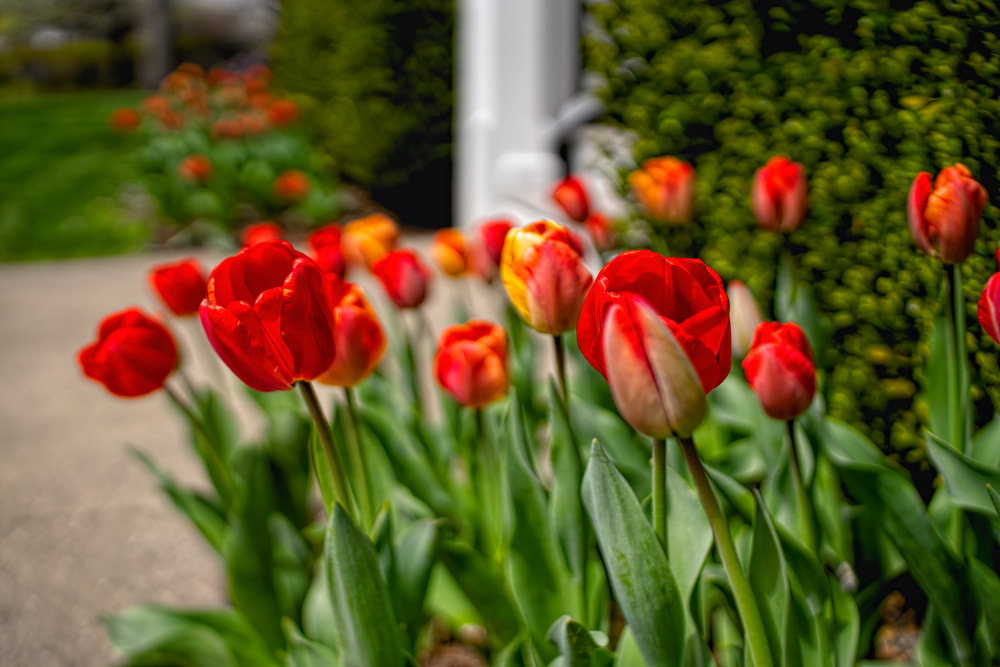So, you spent time last fall planting hundreds of bulbs that were going to bloom throughout the spring. Why didn’t all of the sprout?
 1. Rabbits or squirrels at them
1. Rabbits or squirrels at them
There is a real chance that right after you planted your bulbs this fall, a squirrel came and dug them up and took it off to another location to be stored or snacked upon. You can prevent this from happening in the future by laying chicken wire over your bulbs after planting them or planting them among established groundcover. Also, if you delay planting your bulbs until later in the fall, your neighbor’s bulbs may have already provided the varmint with enough food to store away for the winter and they’ll pass on your patch!
2. Spent foliage was removed too soon last spring
When tulips bloom, they are stunning to see. However, once those flowers fade, you may be tempted to cut the foliage down to the ground and start with your summer annuals. Unfortunately, if you want to give your tulips the best opportunity to bloom next year, you need to leave the leaves above ground so they can absorb sunlight and convert it energy for the following season. Once they begin to wilt, cut the leaves off and compost them.
3. Erratic weather
Some things are just out of our control. Climate change has impacted the winter weather in zone 5 and this unfortunate temperature fluctuation does not help spring bulbs “know” when and how to germinate.
4. They were planted in a shady location
Planting tulips in the shade is fine, but you will need to treat them like annuals replant them every fall. Tulips need at least six hours of sunlight from germination until wilting to properly bloom the following season.
5. Life Cycle
Everything has a cycle of life. Most tulips only last 3-5 years and either begin producing tiny bulblets off the original bulb or simply become unproductive. Take a photo of which plants are not producing, then in the fall dig them up in the fall and remove the miniature bulbs and replant them in a new location. They will take some time to mature, but if you are a person who plants spring bulbs, you are clearly comfortable with patience!
6. Sinking bulb
Over time, some bulbs settle deeper and deeper into the soil and are unable to produce a flower
7. Bulb rot
This can happen if your bulbs were planted in an area that receives poor drainage. If this was the case, more than likely the tulip will not have germinated at all and you will be left with an empty space. If a large number of bulbs have failed in the same area, this is a real possibility
8. Bad Bulbs
Although rare if purchased from a reputable supplier, sometimes bulbs are harvested before they are mature enough to produce flowers. If you suspect this was the case, discontinue your relationship with that vendor, but give the bulbs another year. We all need a little time to mature!
 So if you’re struggling to get your bulbs blooming, or maybe there are other parts around your garden that need tending to, reach out to American Gardens!
So if you’re struggling to get your bulbs blooming, or maybe there are other parts around your garden that need tending to, reach out to American Gardens!








